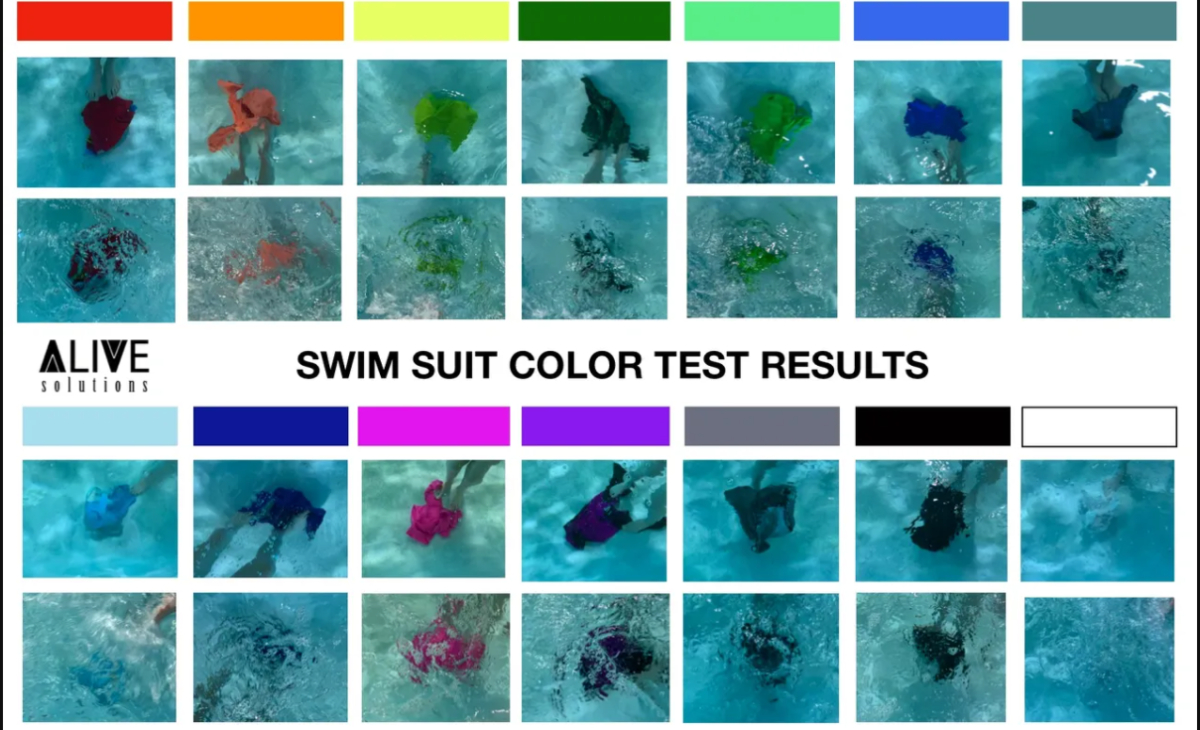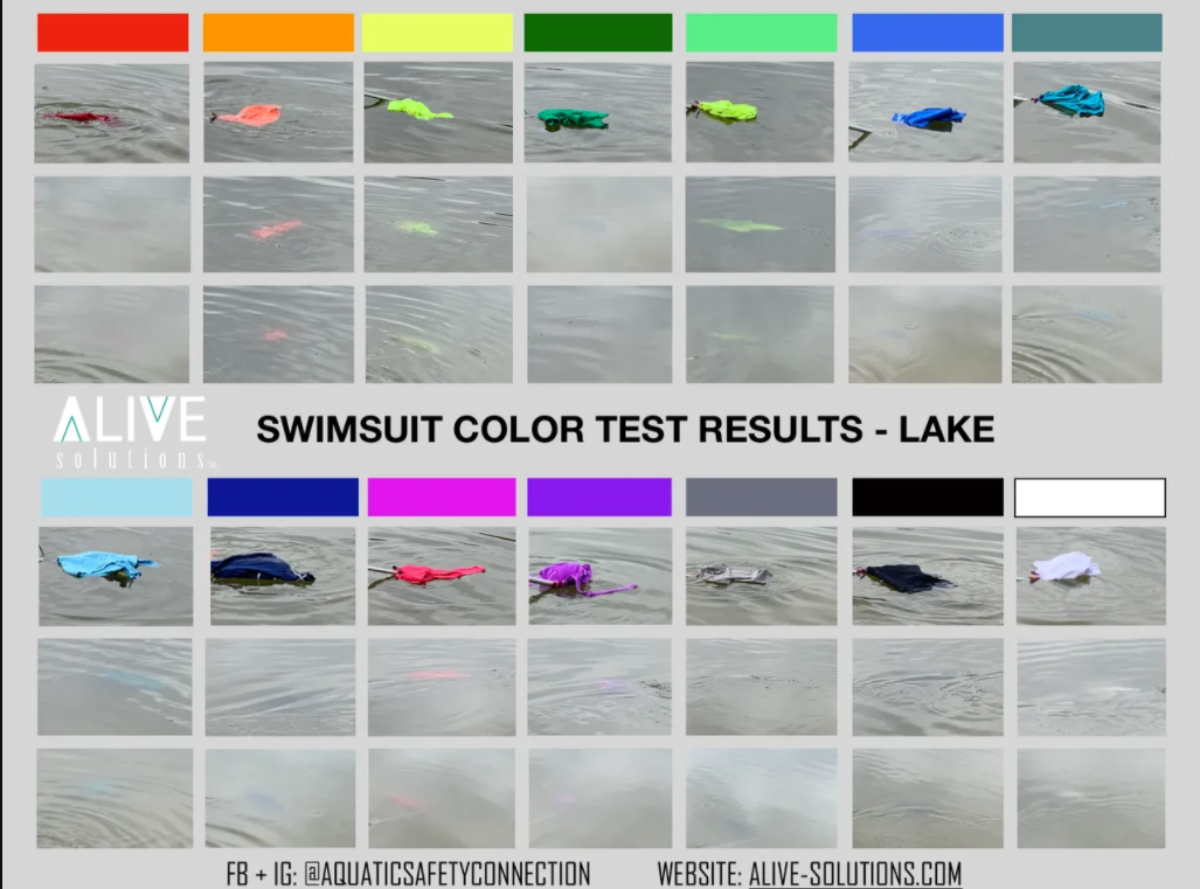How safe is the color of your child’s swimsuit? If you’re like many parents, you probably choose your kids’ swimsuits based on style, price and fit. But swimsuit colors can play a vital role in keeping kids as safe as possible in the water.
With the arrival of warm weather and and families planning beach vacations or buying pool memberships, we need to have a serious talk about water safety. An average of 3,957 people die by unintentional drowning each year in the U.S., according to data compiled by the Centers for Disease Control from 2010-2019. That equates to 11 drowning deaths per day. For children ages 1-14, drowning is the second leading cause of unintentional injury death, after vehicle crashes.
Although that can be heartbreaking and scary for parents to consider, the good news is that with education we can help to decrease deaths by drowning and ensure we can have fun in the sun as safely as possible.
“Drowning is silent and quick. Far too many of our sons and daughters are drowning,” Kate Carr, president and CEO of Safe Kids Worldwide, said in a press release. “We need to get the word out to all parents to debunk the common and persistent misconceptions that can lead to drowning.”
One misconception is that all swimsuit colors are created equal — and all are equally safe. However, a social media post went viral in early 2021 for pointing out that colors matter. CPR Kids, an Australian organization that teaches cardiopulmonary resuscitation and first aid for children and babies, pointed out that blue and dark swimsuit colors should be avoided for children’s swimsuits.
In an eye-opening photo survey led by Alive Solutions (an organization devoted to promoting and enhancing aquatic safety), it’s immediately evident that the color of children’s swimsuits could mean the difference between an adult or a lifeguard quickly spotting a drowning child in the water versus the struggling child going unnoticed until it is too late.
In the research, swimsuits in a variety of colors were placed in bodies of water like lakes as well as in pools. Researchers were trying to find out which colors would be most noticeable under the water from different viewing perspectives.
In these pool photos, also posted to Facebook on Alive Solution’s site at Aquatic Safety Connection, the top photo shows fabric underwater, while the bottom photo shows fabric with agitated water at the surface.

Here is what they found: Dark colors (think navy blue or black) are actually NOT good options, because although they might seem to stand out, they can actually be very easily mistaken for a shadow or dirt in the pool or lake. Dark colors with polka dots or stripes can add to this mirage.
Also a bad idea? Swimsuits that are white or light blue. These colors are too similar to the color of the water and with sunlight streaming down, it can make swimsuits in these colors dangerously camouflaged.
So, what are the safe colors for children’s swimsuits? When they tested swimsuits in the pool, the easiest colors to spot were neon pink and neon orange. But, this changes when we are talking about lake water: In the swimsuit color experiment at the lake, the research from Alive Solutions found that neon pink actually doesn’t show up as well as it did in the pool experiments. Instead, the top safest swimsuit colors were neon orange, neon green and neon yellow.
In these images, the first row shows each color on the surface. Second-row images are from shore level, and third-row images are from an elevated perspective, standing on a boat or dock.

But, Alive Solutions still stresses that even neon colors can disappear very quickly as a child descends deeper into the water. Their lake tests were conducted in just 18-inch depths, yet visibility was reduced very quickly. Hence, it is crucial to ensure that all kids wear life jackets in open water environments, even if they are good swimmers.
“This test also reinforced how important it is in lakes, beaches, rivers, open water environments to keep people on the surface (with lifejackets),” wrote Alive on their blog. “Be aware that other factors will impact results in different environments. Consider: lake coloring/bottom coloring, visibility/water clarity, lighting/weather, surface activity/agitation/currents … Also remember … the bright and contrasting colors help visibility, but it doesn’t matter what color your kids are wearing if you aren’t supervising effectively and actively watching!”
So, when picking out swimsuits for your kids this summer, don’t just reach for the colors that are the most trendy or appealing to your tastes. Neon and fluorescent shades might be harder to find, especially for older boys, but you should look for bright, safe colors in neon shades like green, yellow and orange when possible. Opt for swim caps and goggles in brighter hues as well. Every little bit helps.
And remember: There is no replacement for supervision and life jackets in the water, so stay close to your kids and keep this summer as safe as it is fun. Find more life-saving information about how to keep your family and loved ones safe in the water from Alive Solutions on their social media pages on Facebook or Instagram.
This story originally appeared on Simplemost. Checkout Simplemost for additional stories.


